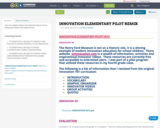
THIS IS A REMIX FROM THE INNOVATION 101 PILOT PROGRAM FROM THE HENRY FORD.
- Subject:
- Social Science
- Material Type:
- Activity/Lab
- Homework/Assignment
- Lecture
- Date Added:
- 09/25/2012

THIS IS A REMIX FROM THE INNOVATION 101 PILOT PROGRAM FROM THE HENRY FORD.
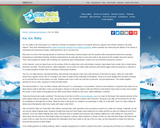
This article describes two hands-on lessons to teach elementary and middle school students about ice, glaciers, and climate change in the polar regions.

This highly engaging lesson focuses on helping students to follow complex multi-step directions to program a micro:Bit in an Hour of Code™ activity related to an informative article. It uses micro:bit Go educational kits and easy JavaScript block coding. The micro:bit is a miniature programmable computer with 25 LED lights that was created by the BBC to introduce children in England to computing. It is available for purchase in the U.S. This lesson meets the 2014 Nebraska Language Arts Standard 8.3.2.c (among others).
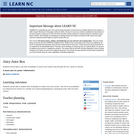
Students will be able to use their knowledge of volume and surface area through this fun, hands-on activity.
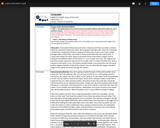
In this lesson, students will learn about how volcanoes are created. Includes video links, discussion, and activity instructions.
NGSS: 2-ESS1-1
Time: 50 minutes
Materials: bucket of clay and toothpicks

A classroom icebreaker with Lego, to introduce students to each other and to the instructor. A playful way to start to get to know your students and seed a constructive classroom culture.

In this lesson, students will learn about the life cycle of an apple tree and sequence the stages of development. Includes activity instructions, extension activities, songs, and student worksheet.
NGSS: K-ESS3-1, 1-LS1-1
Time: 30 minutes
Materials: "Apples Grow on Trees" or other book about apples, apple life cycle student worksheet, glue sticks.

Maker Clubs introduce students to the making movement, the idea that hands on learning and creating things from scratch lays the foundation for future success, especially in STEM fields.
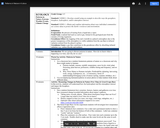
In this lesson students will learn about evaporation, fossil fuels, greenhouse gases, and the greenhouse effect. Patterns in nautre are discussed, including what is happening over time and why we should care.
NGSS: 5-ESS2-1, 5-ESS3-1
Time: 55 minutes - 1 hour
Materials: laminated patterns in nature photos (photos included), plastic cups, rulers, Sharpies
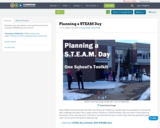
Planning tools, descriptions, and required materials for running a STEAM day at your school

In the past building prototypes of electronic components for new projects/products was limited to using protoboards and wirewrap. Manufacturing a printed-circuit-board was limited to final production, where mistakes in the implementation meant physically cutting traces on the board and adding wire jumpers - the final products would have these fixes on them! Today that is no longer the case, while you will still cut traces and use jumpers when debugging a board, manufacturing a new final version without the errors is a simple and relatively inexpensive task. For that matter, manufacturing a prototype printed circuit board which you know is likely to have errors but which will get the design substantially closer to the final product than a protoboard setup is not only possible, but desirable. In this class, you’ll learn to design, build, and debug printed-circuit-boards.
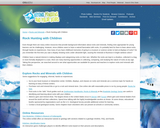
Suggestions and resources for hands-on activities to teach elementary students about rocks and minerals.
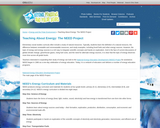
This article provides an overview of energy education curriculum materials available from the National Energy Education Development (NEED) Project. Teachers may become a member, or use free online resources.
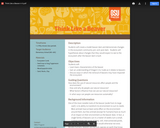
In this lesson students create a model beaver dam and demonstrate changes in the ecosystem community pre- and post-dam. Students hypothesize about changes that they would expect to see to the ecosystem after the beaver dam is built.
NGSS: 5-ESS2-1, 3-5-ETS1-3
Time: one or two 50-minute class periods
Materials: ecosystem cards (included), seed trays or long Tupperware containers, wood/popsicle sticks, sand, rocks, and clay

Let's practice thinking like a scientist! Check out the video from Dr. Tavis Forrester, Research Wildlife Biologist for the Oregon Department of Fish and Wildlife. Then, in the Discovery Challenge video, we'll unlock mysteries that surround us by using the 3 I's of Scientist - I Notice, I Wonder, It Reminds Me Of. Lesson Credit: BEETLESproject.org.
This lesson introduces NGSS standards, and those standards are listed in the lesson.
Videos are part of the Explore Science Club series, an asynchronous online learning program using YouTube videos that connects elementary and middle school students to STEM professionals through hands-on lessons where students explore science and engineering practices related to the highlighted careers. There is an option to use FlipGrid, an online video recording platform for students to share their discoveries
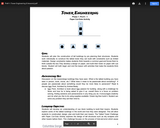
This unit consists of five lessons encouraging younger learners to engineer increasingly better towers using blocks and recycled materials. Each 30 minute lesson ("phase") includes goals, discussion, activity instructions, extensions, and student worksheets.
Phase 1: Paper Cut-Outs Activity
Phase 2: Building Blocks Activity
Phase 3: Number of Blocks Activity
Phase 4: Building within a Space Activity
Phase 5: Recycled Tower Activity
NGSS: K-2-ETS1-1, K-2-ETS1-2, K-2-ETS1-3
Common Core ELA: RI.2.1, W.2.6, W.2.8, SL.2.5
Common Core Math: MP.2, MP.4, MP.5, 2.MD.D.10